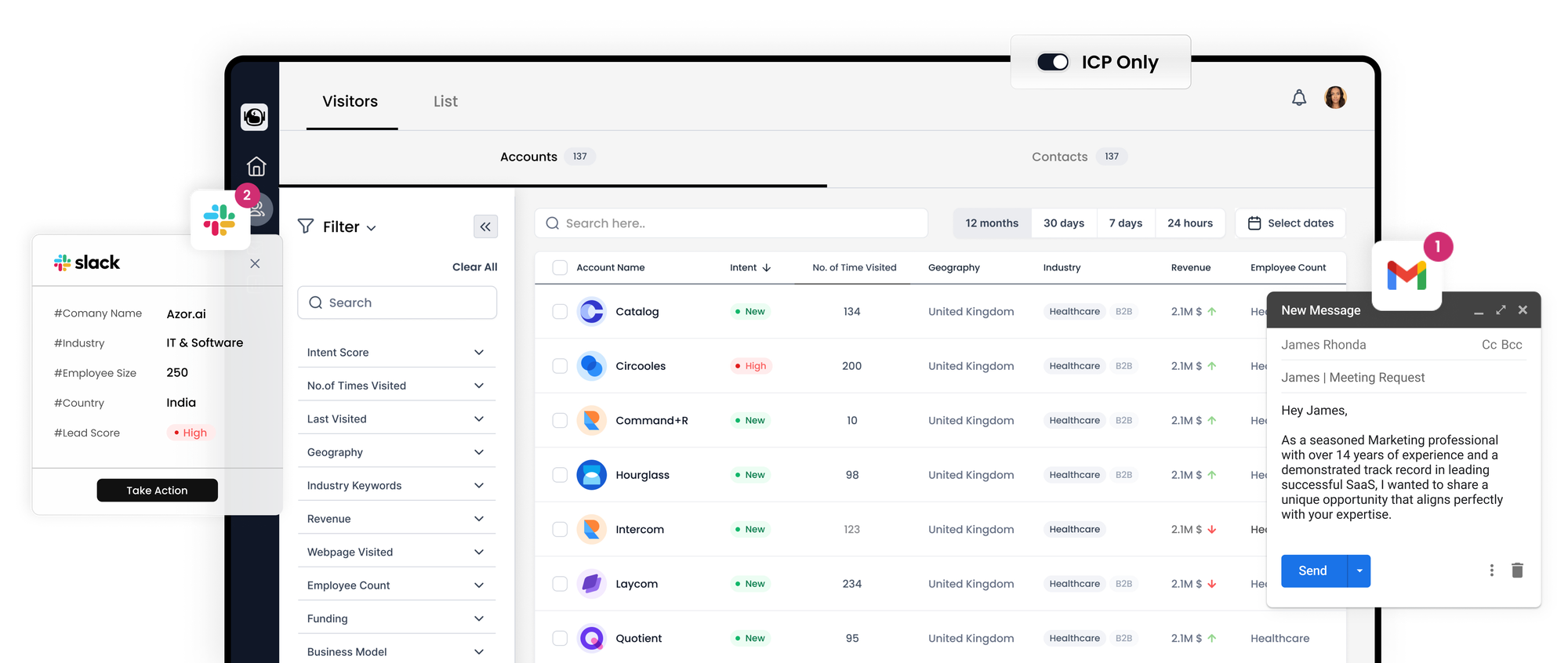Crafting a High-Impact B2B Lead Generation Strategy

Optimizing B2B Lead Generation for Quality and Conversion
To secure a robust sales pipeline and target leads with a higher propensity to convert, it's crucial for growth marketers to go beyond mere lead quantity. Strategies should be meticulously planned and executed with a focus on quality.
According to Gartner, businesses with over 40% of leads sourced from marketing see better conversion rates. Digital content plays a pivotal role in engaging potential buyers early in their research phase, capturing leads that might otherwise remain unengaged.
Below we delve into five key strategies, from channel selection to effective CTAs, designed to balance lead quality with quantity and yield high-quality B2B leads efficiently.

Understanding Qualified Leads
Qualified leads are those meticulously identified as ideal prospects due to their potential for sales. B2B marketers invest additional effort to understand these prospects' needs, interests, and purchase behaviors.
Qualified leads are usually defined by:
- Engagement activities (email interactions, trial sign-ups)
- Duration of engagement
- Relevance to the company’s products or services
Five Strategies for Superior B2B Lead Generation
1. Setting Multifaceted Campaign Goals
An effective lead generation strategy requires a balance of various business objectives. Establish goals across strategic, customer, operational, and financial dimensions to holistically monitor demand creation and lead generation processes.
Tips for crafting lead generation goals:
- Embrace SMART goals that are Specific, Measurable, Attainable, Relevant, and Timely.
- Gather feedback from sales on the average marketing leads they pursue and obstacles they encounter to refine lead qualification and scoring.
2. Creating Comprehensive Enterprise Personas
Venture beyond individual buyer personas to understand the prospect organization as a whole. Crafting an enterprise persona provides valuable insights to engage the buying group and influence their decisions effectively.
Aspects to consider for an enterprise persona:
- Firmographics: Industry, location, and size
- Technographics: Utilized technologies
- Psychographics: Decision-making styles and risk profiles
- Business situation and model: Operational needs and methodologies
- Resources: Budget constraints and total cost of ownership
3. Formulating Clear Communication Objectives
Develop a clear core message and content marketing strategy to ensure a unified approach to communication. Utilize Gartner’s commercial insights method to shift buyer perceptions and behaviors towards a more advantageous position for your product.
Steps to define communication objectives:
- Align objectives with campaign goals.
- Address unmet customer needs identified in enterprise personas.
- Highlight unrecognized problems and propose beneficial actions.
- Use content to shift buyer perspectives and facilitate decision-making.
4. Generating High-Performance Content Deliverables
Tailor content to address buyers' information needs throughout their journey. Utilize a mix of inbound and outbound channels to maximize reach and engagement.
Tactics for impactful content and channel utilization:
- Employ lead magnets like eBooks and webinars for lead capture and nurturing.
- Optimize content for search engines to enhance organic reach.
- Establish a LinkedIn presence for networking and brand discussions.
- Get listed on review platforms like Capterra to build trust and visibility.
- Showcase success stories through detailed case studies.
5. Enhancing Visitor Experience with Effective CTAs
Develop CTAs with compelling incentives that match the perceived value for prospects, encouraging form submissions. Ensure gated content is genuinely beneficial, and forms are concise to prevent deterring potential leads.
Launching and Refining Your B2B Lead Generation Campaign
Begin with a clear blueprint of objectives, personas, communication strategies, content assets, CTAs, and marketing channels. Establish a well-defined workflow and assign responsibilities for efficient execution and accountability.
Continuously evaluate campaign performance, incorporating feedback from sales and stakeholders, and adjust your approach as necessary to maintain effectiveness.
